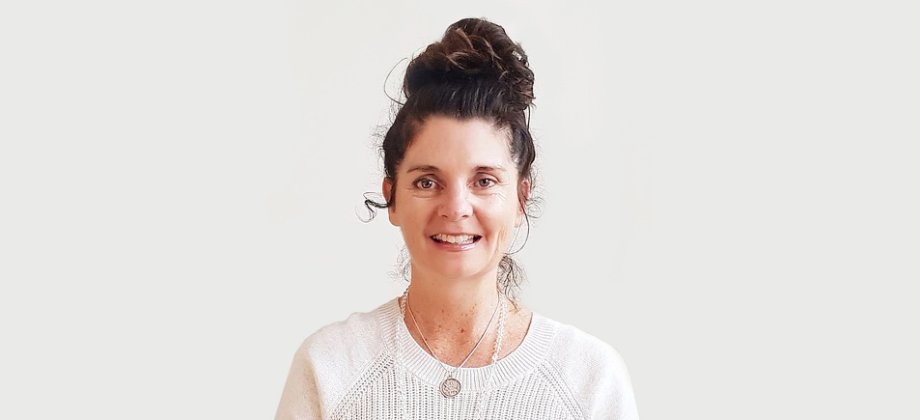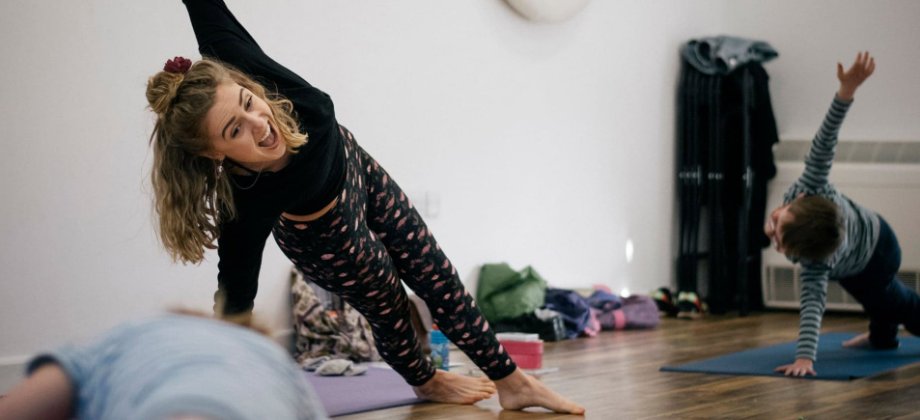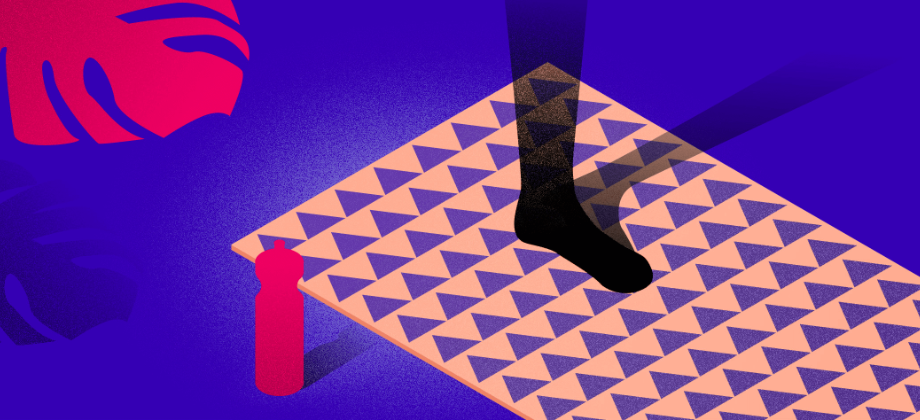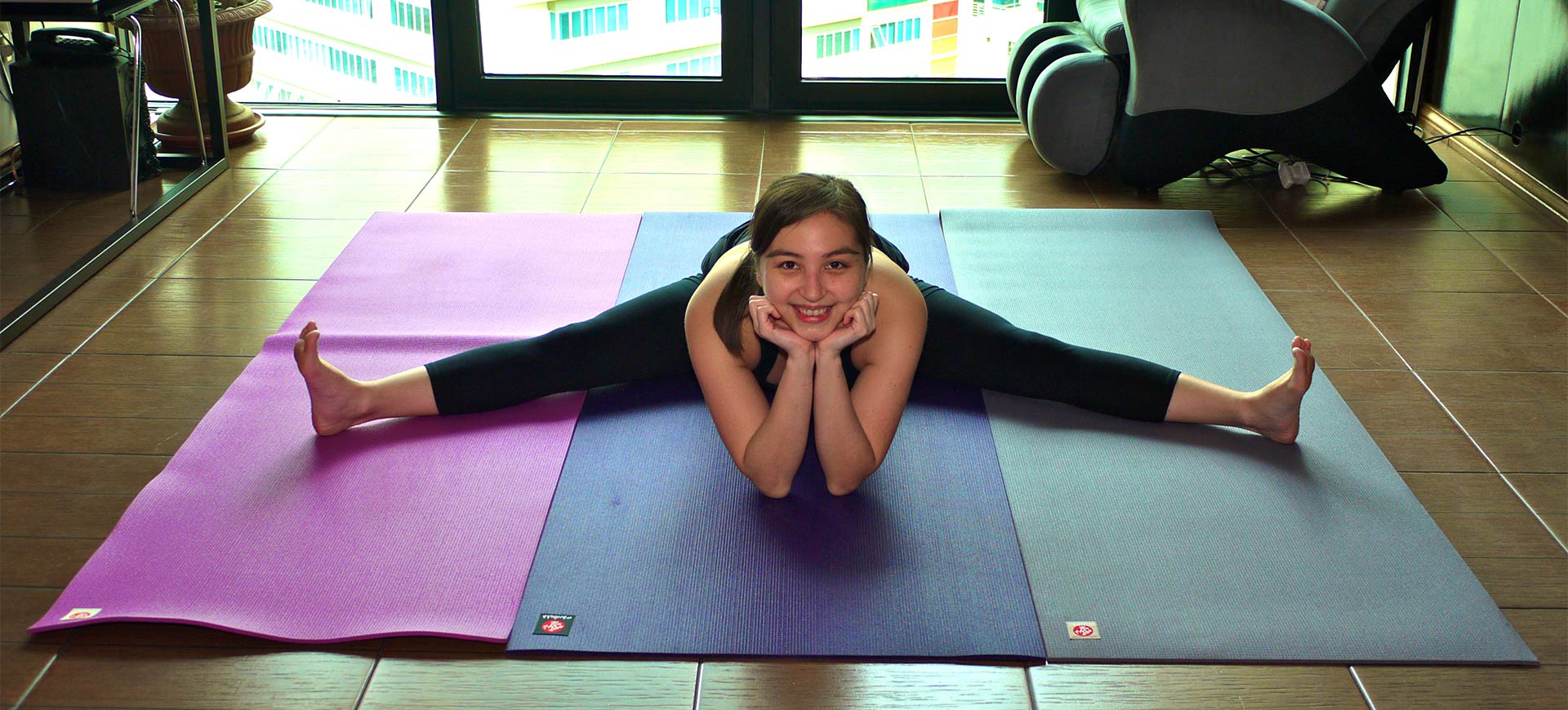
Life of a Yoga Therapist: An interview with Avril Rodriguez
This week we are looking at specialized yoga careers with Yoga Therapist Avril Rodriguez. She is a psychology graduate, Ashtanga teacher and a Yoga Therapist in St. Lukes hospital in Manila, the first in the capital city of the Philippines, to offer a complementary medicine department where traditional holistic techniques collaborate with allopathic or western medicine.
In this article, we will dive into the practice of yoga therapy as Avril shares the beginnings, day-to-day, highlights and challenges of her career. We hope that this may give some inspiration and maybe some aspiration to us here at Momoyoga.
So Avril, what attracted you to yoga therapy?
So, I came into yoga therapy for myself because I was working at the time and having anxiety and panic attacks. I noticed that by doing yoga, it really helped me to find peace–which is one of the things yoga is known for, right? Finding inner peace. But then I saw what was happening, the changes in my mental state, teaching me how to focus, it was even teaching me about change in general. I realized that yoga is more than just exercise, it really does have therapeutic benefits. That got me started in terms of researching. Since my academic background is in Psychology, I started studying how yoga affects stress in relation to how it was changing my life, and as I started doing that, I realized, Ok! Wow! There’s so many more applications even beyond stress and anxiety.
I understand that in the Philippines, yoga therapy isn’t as widespread in comparison to other countries. How did you and your institution get started?
First of all, yoga therapy is something that’s been going on for how many years– because yoga in itself is therapeutic. So I wouldn’t claim that it’s something that I created. I guess what I could say is that here in the Philippines, I was the first one to bring it to an institutionalized setting. I work with St Luke’s Hospital which is one of the major medical centers here in the country. Within it, we have a complimentary medical service. In that service, I founded the yoga therapy practice. Right now, there are some other centers that have started to offer it but the difference is that they have to be scheduled for the services. As opposed to someone who has regular clinic hours, which is what I have. I‘m typically there on multiple days a week.
Wow! How did that come about or come together?
So I got called in for an interview by Dr. Kit Navarro, the founder of the complementary medicine service at that time. I think it was august of 2011. I was actually called in for an interview because we have the wellness center which is where they do executive check-ups. They had a big open space and they just wanted a yoga teacher to come in and just offer yoga classes for the people waiting for their check-ups. I guess just as an alternative workout / form of entertainment. While I was there, I started pitching yoga therapy. I was like, “You know, I found out that this really works!” and because of my psych background, I knew how to use the terms of therapy and its benefits. Anyway, I got the doctor interested. I told him that I could provide a review of related literature, and I did. I said, “Don’t just get me to do a yoga class, let me have a clinic. Let me see patients.”
The difference with yoga therapy is using all the tools from the yoga practice in a really bespoke manner, personalizing it according to the needs of your yogi.
So you refer to them as patients?
We refer to them as patients because in complementary medicine, we are still in a hospital setting–working in tandem with doctors. We are taking more natural and traditional techniques and then we complement or we work with allopathic or western medicine. It cannot replace clinical practice. What we offer is additional support and guidance.
What is the difference between a yoga therapy session and private yoga classes?
Now the thing with yoga therapy is, you know, it’s still yoga. The mechanics of it are the same. The difference with yoga therapy is using all the tools from the yoga practice in a really bespoke manner, personalizing it according to the needs of your yogi. So you can’t really create something special for that in a private yoga class where you are addressing an actual healthy person who just wants a more focused yoga class. Whereas, in yoga therapy this is a person who needs specific help, or has a certain condition and yoga can help with the improvement of their quality of life.
Can you tell us what a session with you is like?
So upon an initial interview, I have a blank sheet of paper, I end up taking my own notes about what’s going on because when we talk about the body and yoga we have the physical body, the mental body, we have layers on the different koshas, so I take notes on how their emotions are, their diet, sleeping habits, and then I’ll also draw a silhouette of the body and then pinpoint where they need help. In my initial sessions, it would be like any other yoga class where I walk my yogis through different postures according to their needs. I also do a lot of coaching, even energy medicine, meditation and we also discuss yoga philosophy, if what’s needed is more of a mindset shift. Because of my psych background, I work heavily with the mind and emotions as well.
What are some of the highlights in your career?
I would say the work I've done with the parkinson’s foundation. I’ve given yoga therapy to large groups. Although if that’s the case, then the sessions would have to be specified to a certain group of people. I’ve also done more personalized sessions with patients with parkinson’s. While they can have a particular tick in different places of the body, what a lot of people don’t know is that the whole body gets stiff. Which makes it difficult for them to move in general. So yoga can be the best thing you can do for them. I remember one of my Parkinson's patients really loved the sessions because at the end of it, his body felt looser and he felt a little more in control of himself afterwards. It was a great improvement on his quality of life. I’ve worked with athletes, cancer survivors, people with stress, anxiety, weight and migraine issues, and because I was trained in yoga therapy for children with special needs, I also helped a child with microcephaly. I adapted yoga to highly specialized conditions. It was challenging but it was also most fulfilling.
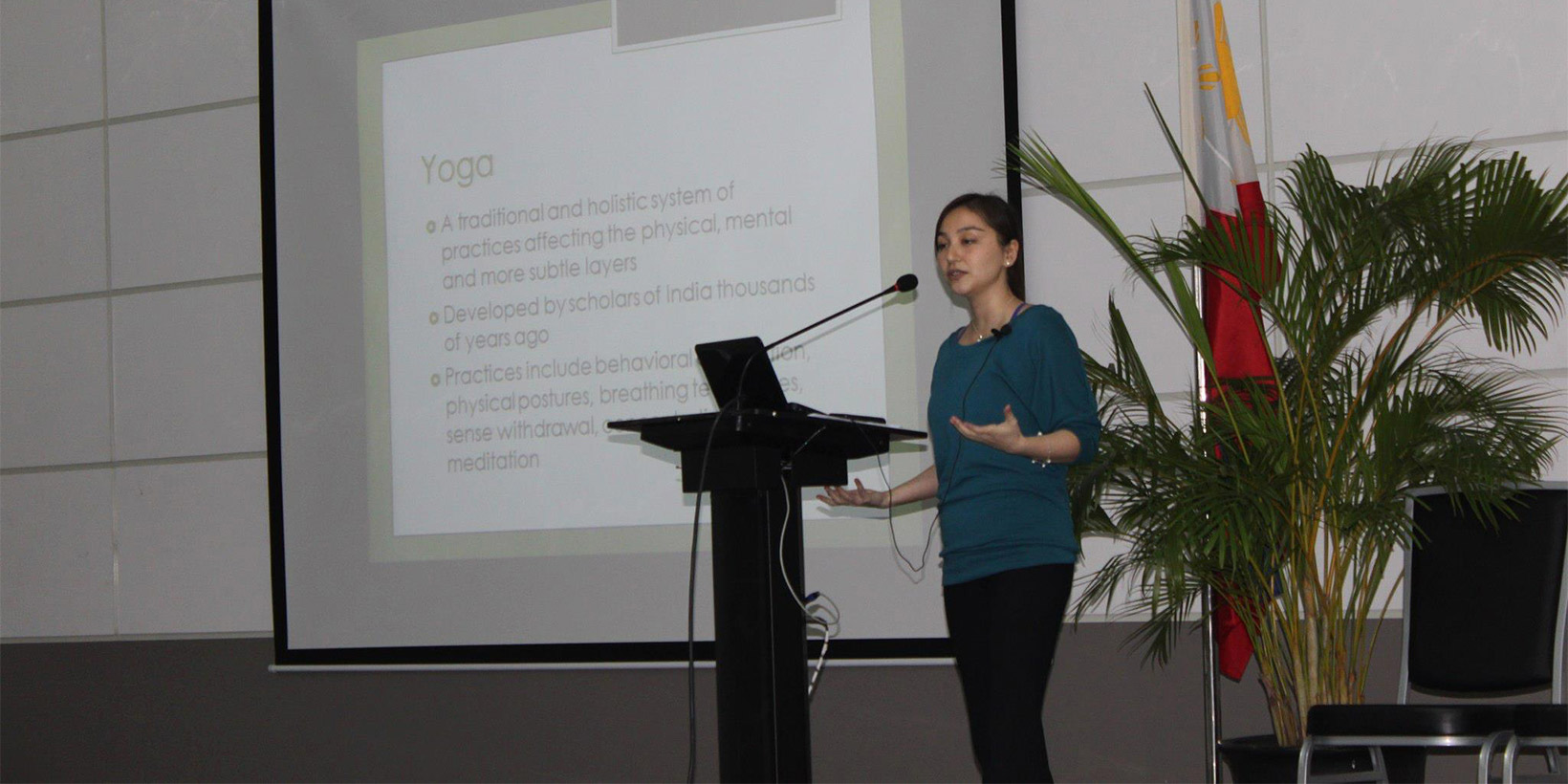
What are some of the Challenges?
Honestly, number one would be education of the patients. Most of the population knows about yoga from what they see in gyms and fitness centers. When you say “yoga”, you usually think about the slim women in those really nice yoga outfits but it’s so much more than a magazine cover! So I had a lot of people come in and they were like, “ You know, the doctor told me to see you and I don’t know why because I can't do that. I can’t reach down to touch my toes.” I had to explain what the yoga practice was about and their benefits. I showed them studies and my review of related literature. Another big thing was people would come into the clinic and say, “ Do yoga to me!” So people expected to receive a massage or that I manually stretch them. I ended up doing group classes and presentations just for awareness to get people to open their minds to that idea.
What advice would you give to Aspiring yoga therapists out there? I mean, most of us didn’t graduate with a psych major.
So when I started this, yoga therapy in general was still very young. There were a few courses that were already being offered but it was with a big focus–very niche. For example, what I initially took was yoga therapy for special kids. I took my 200-hour Teacher Training in Centered Yoga in Koh Samui and John scott in New Zealand. I took different courses on different topics that I’m interested in. I’ve been lucky that they all came together and supported each other. In that sense, aspiring yoga therapists are very lucky in that you are living in a time where there are more comprehensive courses for yoga therapy these days. You don’t need to take different ones. I would say this about courses, look into the different curriculums being offered. Look at the basis for it, see what you like and if it matches with you. Lastly, get training with live supervision or atleast live supervision when you are handling people. You’ll need your licensed yoga therapist teacher to step in if things go wrong.
What are you up to next?
Concurrence techniques is a method I have developed that one can practice on their own as they are on their journey, with the goal to take them from their current state to the best of their potential. Which is why it’s called concurrence because the magic of the technique happens in the present. We will use physical, mental, emotional, and spiritual practices to get you to your best self–you version 2.0. I am also planning some online workshops and retreats that are potentially translatable as live retreats someday.
Avril Rodriguez has always been an avid learner. She is always on the lookout for something that may serve her students–potential or current. As she embarks on her journey with Concurrence Techniques, you can be sure that she is a student in something new. Watch out for her upcoming retreats online and live!

